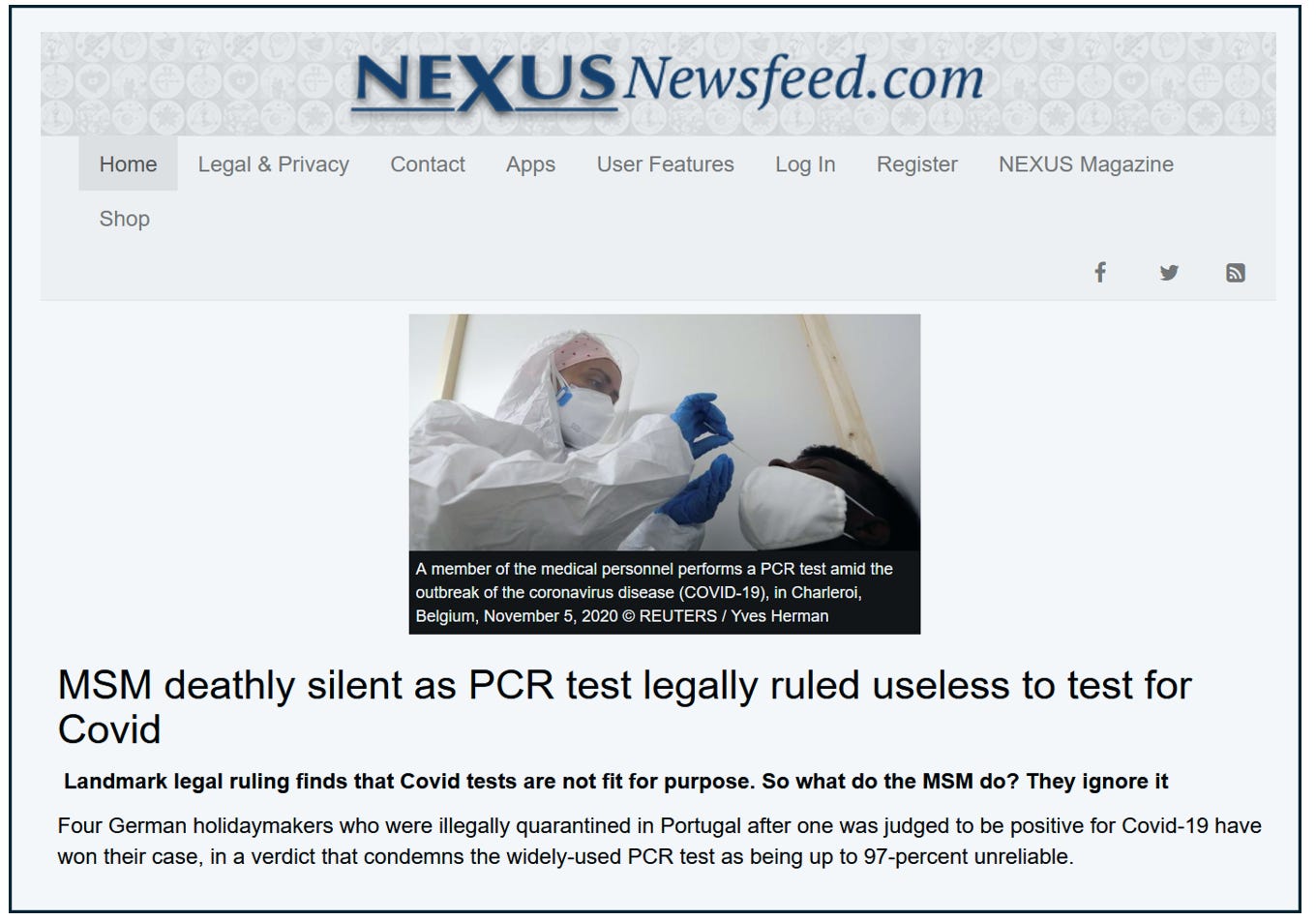WE’VE done many videos and substack articles talking about false positives for diagnostic test results and, in particular, for the covid PCR tests. Unfortunately, many people including scientists and legal scholars still do not really get it.

Someone on Twitter just posted this article about a Portuguese court ruling against the legality of the PCR test in the context of using it to quarantine healthy people who happened to test positive – in this case some German tourists who brought the case.
In fact the story is from November 2020. Since we believe the covid PCR tests should never have been used, we completely agree with the ruling, but it still infuriated me. That’s because, although the ruling was correct, the judges still did not fully understand the extent of the problems of false positive results. The judges said that the two most important reasons that a positive test does not correspond to a Covid case are that ‘the test’s reliability depends on the number of cycles used’ and that ‘the test’s reliability depends on the viral load present.’
Now, while these are well known and common reasons for false positives, the judges missed the elephant in the room just as most people seem to do: the impact of the underlying population infection rate (ignoring it is called the ‘base rate fallacy’). Even if you could fix systemic problems like cycle thresholds set too low, wrong number of positive genes considered, cross reactivity with other and dead viruses etc (all things we have written about on this substack) these problems are dwarfed by the underlying infection rate. Even if the false positive rate is low, when the infection rate is very low almost all positive results will be false positives.
For those who still don’t ‘get it’, this short video hopefully will make it clear.
This article appeared in Where are the numbers? on March 16, 2024, and is republished by kind permission.
Editor’s Note: The PCR test, though still described as the ‘gold standard’ of covid testing, was dubious from the start. As Sonja Elijah reported in March 2021 for TCW, its inventor Dr Kary Mullis had spoken candidly about the dangers of the misuse of PCR testing. The sequence of events Sonjia details from January 7, 2020, when Chinese authorities announced that a novel coronavirus was the cause of cases of pneumonia detected around the end of December 2019, deserve rehearsing: ‘Remarkably only three days later, on January 10, a complete viral genome sequence is made available on virological.org. Around this time in January, Professor Christian Drosten develops a RT (Reverse Transcription)-PCR test protocol for the novel RNA virus, SARS-CoV-2, in his lab in Berlin, based on Mullis’s PCR technique.
‘Drosten’s testing protocol is accepted by the World Health Organization (WHO) on January 13, 2020. This is almost two months before the WHO declares the novel coronavirus a pandemic on March 11, 2020.
‘On January 21, the Corman-Drosten paper is submitted to the journal Eurosurveillance. A rushed peer review occurs the following day (this peer review has never been released despite repeated requests from international scientists). On January 23, the Corman-Drosten paper is published, laying the foundation for the RT-PCR test to be the ‘gold standard’ for detecting SARS-CoV-2, later confirmed by the WHO.’
An independent group comprising senior molecular geneticists, biochemists, immunologists and microbiologists at the time found at least ten major flaws with the paper. They were not heeded.
The web of interests of the Corman-Drosten paper’s author which are detailed in Part 2 of Sonja’s report assured its huge but misplaced influence on the worldwide draconian and unnecessary quarantines and social distancing policies that PCR test results appeared to justify.
Though exposed (at least in part) by the Portuguese lawsuit described by Professor Fenton above, you might have thought the European Appeal court’s conclusion then that ‘any enforced quarantine based on those test results is unlawful’ should have been ‘proof enough that the PCR test was far from being the “gold standard” in testing for SARS-CoV-2 and essentially “not fit for purpose”.’
It was not, however. As Sonja wrote – and this was in March 2021 – ‘the public has had to bear the brunt of the “unlawful” quarantining resulting from wide-scale but unreliable PCR testing and will bear the heavy tax burden the Government’s investment in it has incurred’. We still do. And will for years to come.
You can read the final part of her report here.
Three years later and despite Dr Reiner Fuellmich‘s best efforts, which Sonja detailed in the final part of her report, no one has been brought criminally to account for the creation of a PCR pandemic.










